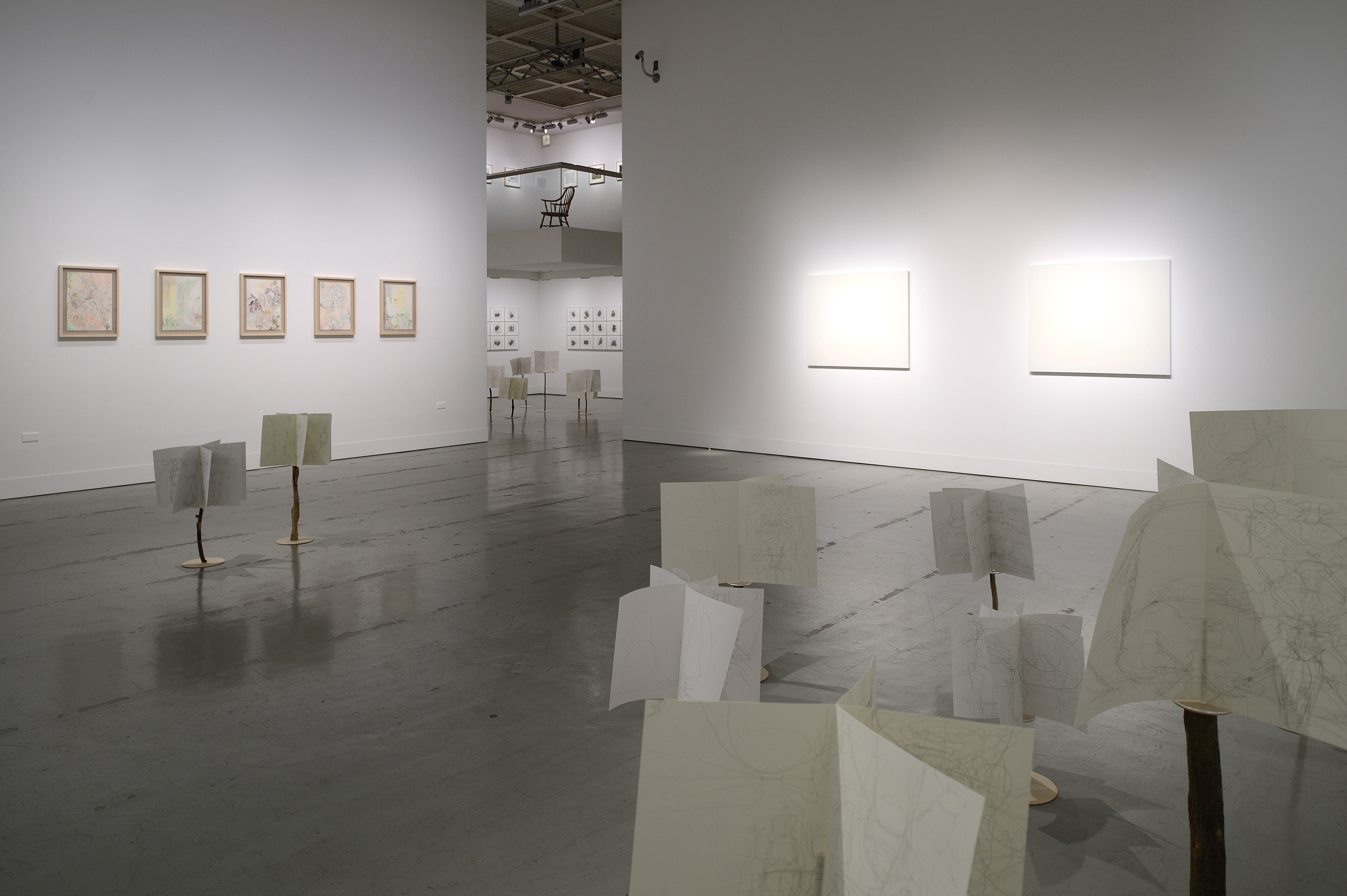The Shiseido Gallery's group exhibitions, or Tsubaki-kai (the group is named after the company motif of the camellia flower), date back to 1947 when, following World War II and the reopening of the gallery, artists were brought together to pursue a mutual approach or theme. Now in its seventh incarnation, the most recent Tsubaki-kai is the first group formed since the Great East Japan Earthquake and tsunami of 2011, and it has added to its concerns the meeting of personal preoccupation with contemporary art's wider relevance and meaning.
Despite an ever-changing cultural landscape, there are no strangers here. Painter, writer and founder of Rojo Kansatsu Gakkai (The Street Observers Society) Genpei Akasegawa is the eldest at 77, a chief exponent of postwar Dadaism and founding member of the wonderfully provocative and avant-garde Hi-Red Center collective. His contribution this year is an array of pencil drawings of classic cameras published in old photo magazines, marked, numbered and lovingly cataloged with delicate precision.
The two works by Iwate-born photographer Naoya Hatakeyama — the first, "Untitled (Electric)" (2005), a sequence of photos of a quarried landscape displayed along the gallery's mezzanine entrance, and the second, "Val Bedretto" (2005), of the Swiss valley framed through an unnamed lattice structure — point toward Zon Ito's drawings in the middle of the gallery, as if both sets of images somehow refer to each other. Ito, for his part, places his "New Drawings For the Building of Invisible Landscape" (2014) on stands made from tree branches, appearing as if he were sketching Hatakeyama's images of industrial earthworks and tracings of light at night.


















With your current subscription plan you can comment on stories. However, before writing your first comment, please create a display name in the Profile section of your subscriber account page.